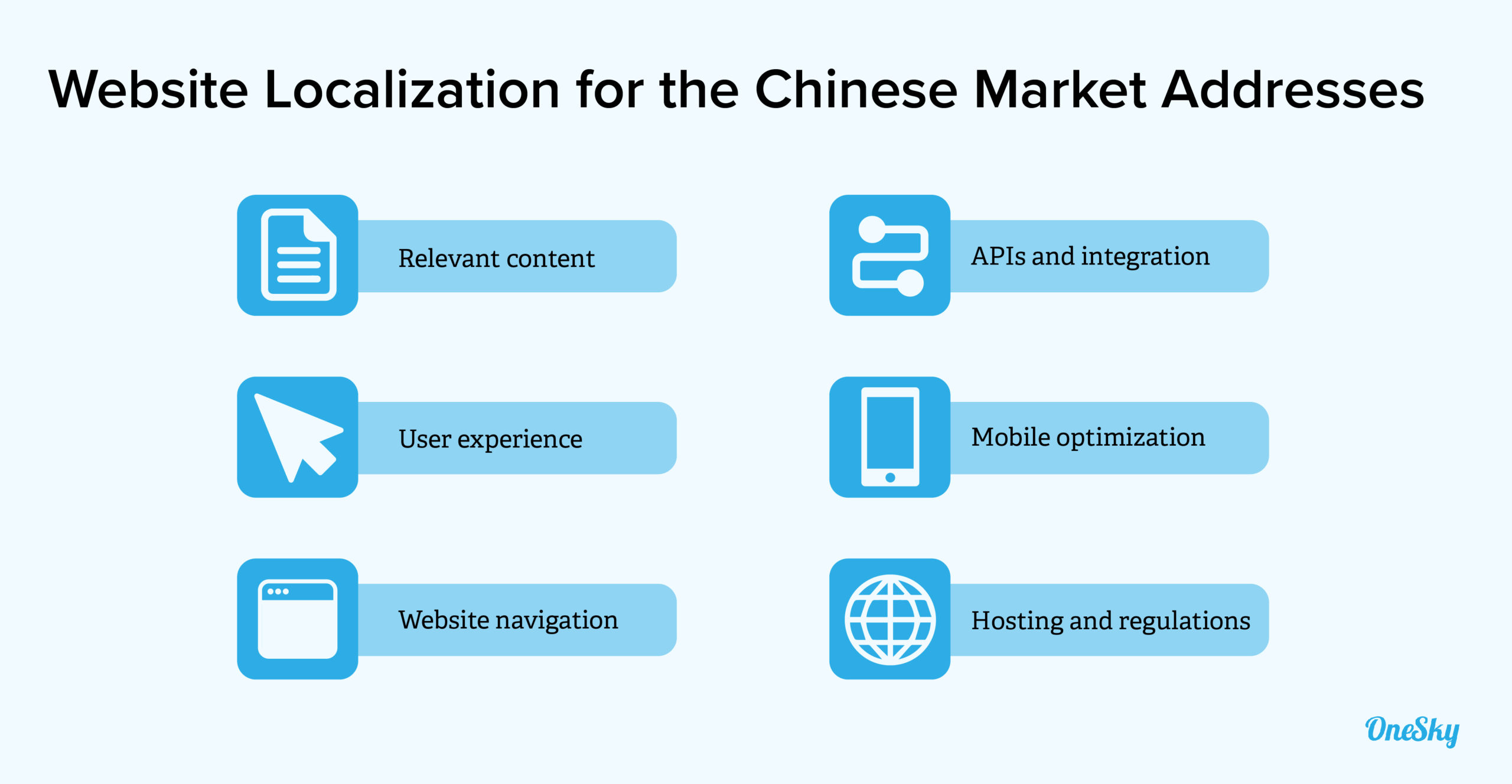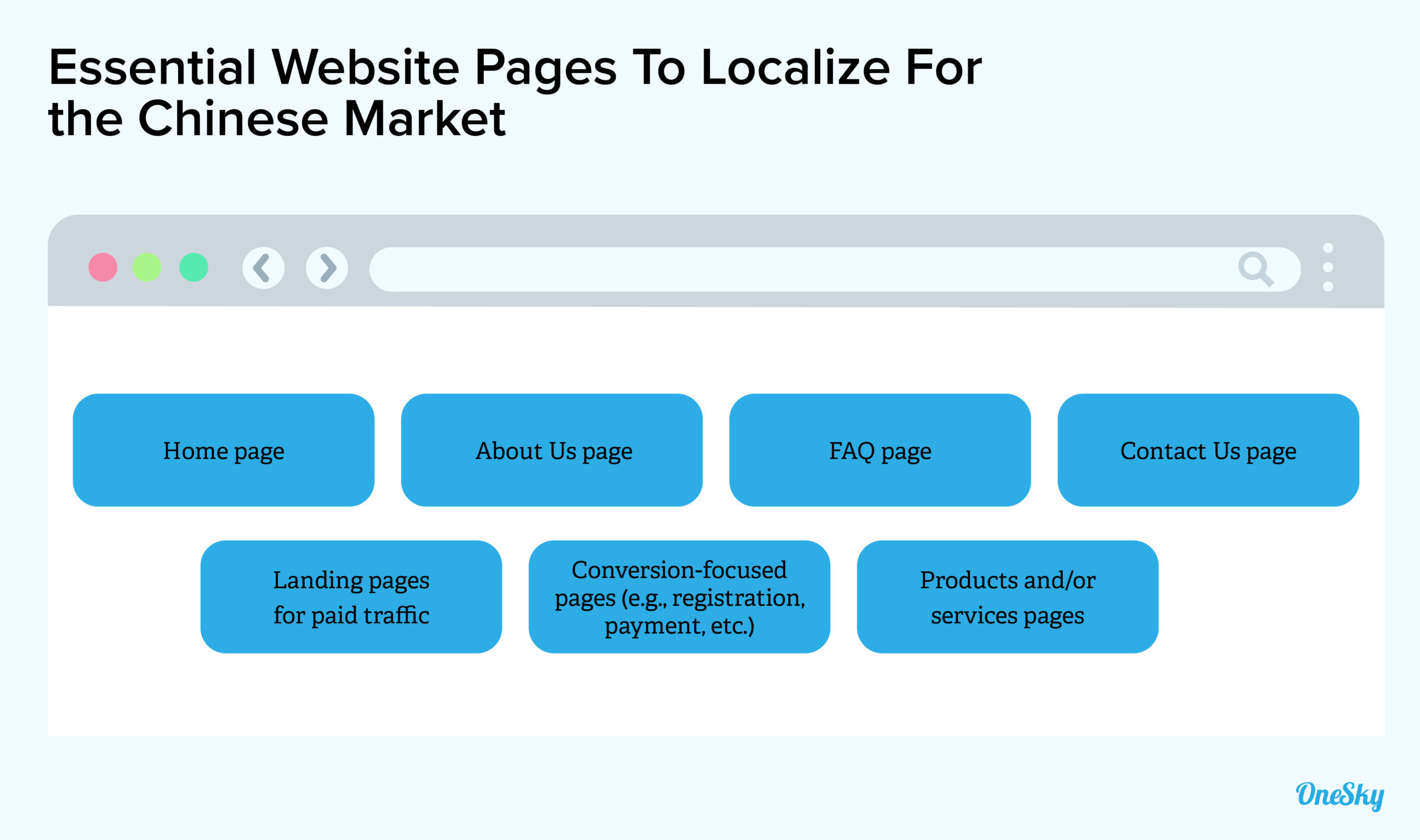A Guide to Website Localization for the Chinese Market
China’s consumer market is growing at around 12% annually and is expected to reach a value of $8.4 trillion by 2022 and $12.7 trillion by 2030.
To expand into this lucrative market, you need to establish an online presence with a solid home base—a website.
But the Great Firewall blocks many sites that originate from outside the country. Your website must also meet the technical and legal requirements established by the Chinese Ministry of Security. Plus, you need marketing content that will resonate with an audience with a very different cultural background than your home market.
Entering the Chinese market isn’t a stroll in the park, and one misstep can cost you dearly. Here’s what you need to know about website localization for the Chinese market.
Why You Need Website Localization For the Chinese Market
Localizing your website for the Chinese market requires a lot more than translating the content to Chinese. The process must ensure that your content can get past the Great Firewall and reach your target audience.

The localization process ensures that your content is relevant and attractive to the target audience by using the appropriate slang and cultural references, while the website structure is easy to navigate by meeting user expectations. It also considers Chinese SEO, so your content can be found by local search engines such as Baidu.
Chinese consumers prefer to read detailed product pages with full descriptions and lists of certifications. As such, you may have to adapt page layouts to meet these expectations. You’ll also need to cater to Chinese shoppers’ preferences—for example, by delivering an optimal mobile experience since most Chinese consumers access the internet with their smartphones.
Additionally, you need to remove APIs that may be blocked by the Great Firewall and replace them with local options such as Youku, Baidu Maps, WeChat, etc. You must also address hosting—e.g., if you want to host the site locally to improve load speed, you’ll need an Internet Content Provider (ICP) license.
For eCommerce websites, the localization process will require implementing payment integration (e.g., Alipay, WeChat Pay, UnionPay, etc.) and logistics integration with local service providers.
You may also need to address integration with other third-party platforms to deliver a seamless customer experience. These include warehouse management system (WMS), customer relationship management (CRM), enterprise resource planning (ERP), and operating measurement system (OMS).
How To Localize Your Website For the Chinese Market
Here are the key steps to help you navigate website localization for the Chinese market:
1. Plan and Research
You need to devise a marketing strategy and adjust the user experience (UX) and user interface (UI) to meet the local audience’s expectations. Here’s what to consider:
- Will you be translating the content into traditional Chinese or simplified Chinese?
- Will you retain the same UI (e.g., page design,) or will you need to adjust it?
- Do you have an SEO strategy to help you achieve top ranking in Chinese search engines?
- Will you host the website inside China? If so, you’ll need an ICP license.
2. Identify Content for Translation
To get the most of your localization effort and shorten time to market, identify pages that will make the most impact and help you gain a foothold in the Chinese market.
Create a list of essential pages that will help the audience understand your products and guide them to take the next step (e.g., make a purchase, fill out a contact form, follow your WeChat account, etc.) This list will give you an overview of what you need to translate and the scope of the localization project.

3. Decide Who Will Handle the Translation
Even though machine translation (MT) has become increasingly popular, it isn’t sufficient for producing high-quality translations. You should set aside the time and budget to hire professional translators.
Meanwhile, it could be tempting to have your Chinese-speaking employees translate the content. But it’s often not the best option. They don’t have experience creating high-quality translations or using translation management software (TMS) to manage the process.
Instead, work with professional translators who are native speakers, understand your target market, and have a good grasp of the subject matter. You may assemble an in-house team, hire a language services provider (LSP), and work with a bi-cultural marketing agency.
An LSP is often sufficient to handle most translation needs to help you balance costs, timeline, and quality. A bi-cultural marketing agency can help you translate and transcreate critical marketing content to achieve your business objectives.
4. Select Your Localization Partner
Working with a localization partner can help you streamline the process, address critical issues, and ensure that nothing falls through the cracks.
Select a partner that can provide you with an experienced team of linguists and translators, project managers, designers, and developers. It should also help you choose the right tools and technologies to streamline the localization process and deliver a user experience that aligns with your brand image.
Since the typical marketing channels, such as Facebook, Instagram, and YouTube are banned in China, your partner can help you identify local social media platforms to support your marketing effort and drive website traffic. Additionally, it can help ensure that your website and marketing content adhere to the local laws and regulations, such as the Advertising Law of China, to avoid hefty penalties.
Putting It All Together
Having the right tools and workflows is key to managing your localization project cost-effectively.
For example, you should use a translation style guide and glossaries to ensure that the translated content delivers a consistent brand experience. Implement proofreading and quality assurance (QA) processes to ensure that the content is accurate, the translated text fits well within the page layout, and the website copy adheres to local regulations.
You can automate workflows and run your project efficiently with the help of a localization management platform. You can communicate with your teams, manage all the translation tasks, get real-time updates, and test your website all in one place.
OneSky is taking this one step further: We have created a dedicated system to handle the Chinese localization process.
Besides robust features such as translation memories, term glossaries, automation, string contexts, and more, you also have access to a team of professional translators and a dedicated translation manager to help you navigate the localization process specific to the Chinese market.
Try OneSky for free and see how we can help you localize your website cost-efficiently.



 Written by -
Written by - 




 Written by
Written by 


